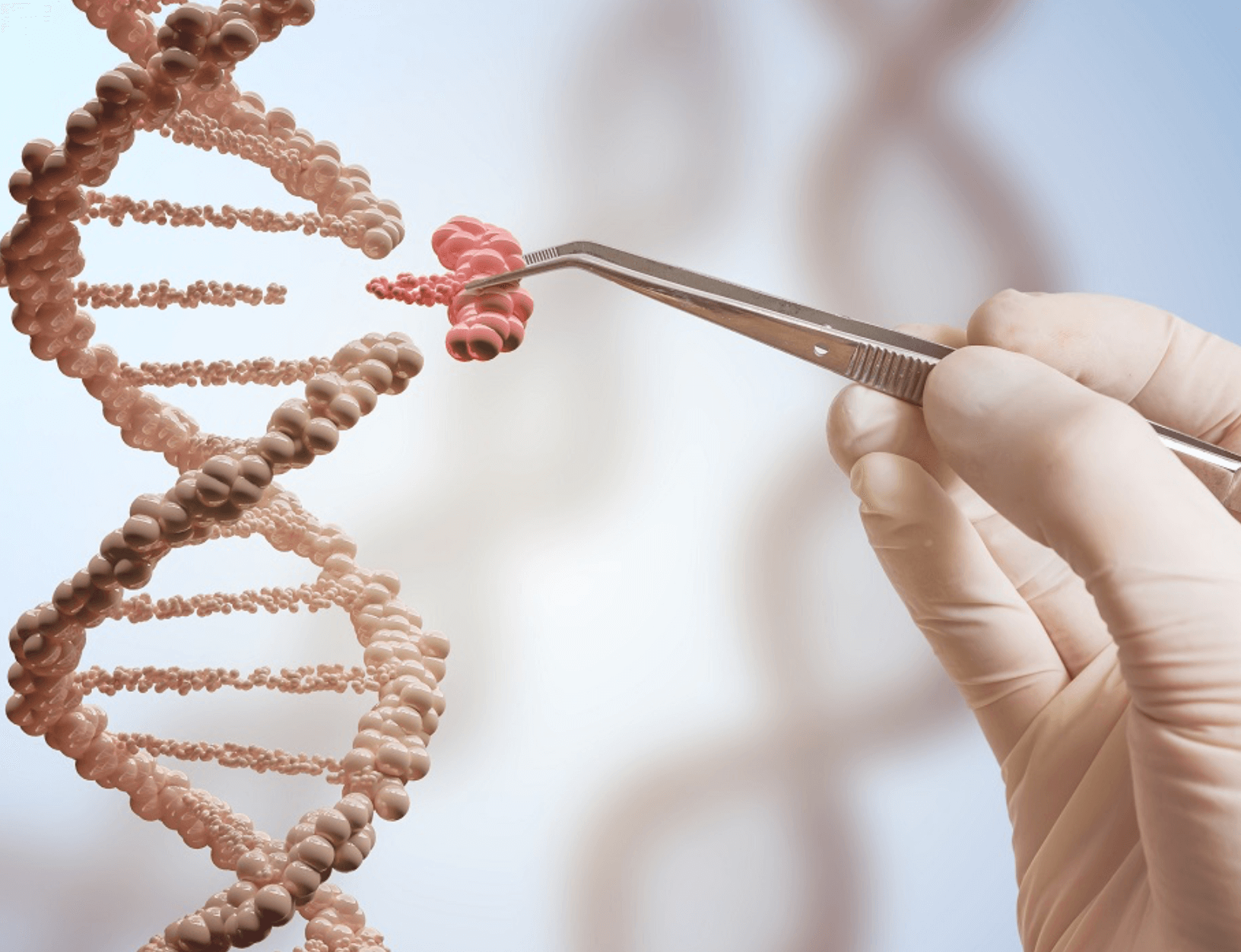Genetic editing technology is revolutionizing the way we approach and treat genetic diseases, ushering in a new era of gene therapy and personalized medicine. Pioneered by researchers like David Liu, advances in techniques such as base editing and CRISPR technology allow for precise modifications to DNA, offering hope to millions affected by genetic disorders. By correcting mutations at their source, these innovative methodologies are not just theoretical concepts but real-life applications, as evidenced by significant successes in clinical trials. As we explore the potential of these technologies, the implications for improving human health and tackling previously untreatable conditions are nothing short of groundbreaking. The evolution of genetic editing technology represents a triumph for science, showcasing the transformative power of research in shaping our understanding of life and disease.
The field of genome modification has seen remarkable advancements, particularly in the form of innovative methods that promise to alter the course of hereditary illnesses. With tools like CRISPR-Cas9 and novel approaches conceived by experts such as David Liu, scientists are now equipped to edit genetic material with unprecedented accuracy. These evolving techniques not only facilitate gene therapy but also raise exciting possibilities for curbing the impact of genetic diseases that have plagued patients for generations. As researchers delve deeper into the mechanics of DNA, the potential to refine our biological makeup emerges, unveiling pathways to healthier futures. This burgeoning discipline stands as a beacon of hope, illuminating the transformative capacity of modern science.
The Advancements in Genetic Editing Technology
Genetic editing technology has revolutionized the field of medicine, providing innovative solutions for previously untreatable genetic diseases. Grounded in the discovery of CRISPR-Cas9, which enables targeted DNA manipulation, researchers have expanded these methodologies to include pioneering techniques like base editing and prime editing. This evolution allows scientists to make precise changes to gene sequences, correcting mutations that can lead to serious conditions such as T-cell leukemia, as highlighted by the remarkable recovery of Alyssa Tapley. As we continue to explore these advancements, the promise of genetic editing in therapeutic applications becomes increasingly tangible.
The journey from classroom theories to real-world applications in genetic editing technology represents not just scientific progress but also a beacon of hope for countless individuals affected by genetic disorders. With researchers like David Liu at the forefront, base editing and prime editing are gradually reshaping the landscape of gene therapy. These technologies not only underscore the potential of tailoring treatments specific to an individual’s genetic makeup but also signal a shift towards more humane and effective medical interventions.
Base Editing: A Breakthrough in Gene Therapy
Base editing stands out as a groundbreaking advancement in gene therapy, allowing for the correction of specific genetic mutations without causing double-strand breaks in the DNA. Unlike traditional gene-editing methods, base editing is designed to precisely convert one DNA base into another, tackling some of the most common mutations responsible for genetic diseases. Researchers have harnessed this remarkable technology to provide new hope for treatments, showcasing early success in clinical trials. This innovative approach demonstrates the shift from merely trying to disrupt genes to actively correcting them, thereby enhancing the therapeutic landscape.
David Liu and his team have been instrumental in developing base editing, particularly remarkable for its minimal risk of off-target effects. This precision not only represents a significant improvement over previous gene editing technologies but also raises new possibilities for treating a range of genetic diseases that have long plagued patients and families alike. As demonstrated in Alyssa Tapley’s case, where base editing provided a lifesaving treatment, this scientific breakthrough could redefine gene therapy and revolutionize how we approach genetic conditions.
CRISPR Technology: The Foundation of Modern Genetic Research
Established as a groundbreaking mechanism in gene editing, CRISPR technology has laid the foundation for numerous advancements in genetic research and therapeutics. Initially observed in bacteria as an immune defense mechanism against viruses, the ability to modify genes through CRISPR-Cas9 has empowered scientists worldwide. Recognizing the vast potentials of manipulating DNA, researchers have continuously sought new methods that extend beyond the limitations of traditional CRISPR approaches, giving rise to innovative solutions such as base editing and prime editing.
As we delve deeper into the applications of CRISPR technology, the key takeaway lies in its flexibility and efficiency. While CRISPR-Cas9 serves as a remarkable tool for gene disruption and deletion, it is the ongoing research by pioneers like David Liu that bridges gaps in existing methodologies. By focusing on base editing and other precision tools, researchers are not only improving treatment efficacy but also amplifying the potential to amend genetic conditions at the molecular level. This unprecedented ability to modify the genetic blueprint underscores the impact of CRISPR technology on future medical breakthroughs.
Gene Therapy and Its Impact on Genetic Diseases
Gene therapy stands as a promising frontier in the fight against genetic diseases, enabling the modification of genes to treat or prevent illnesses. This innovative therapeutic approach encompasses various techniques, including the utilization of genetic editing technologies such as CRISPR and base editing. By directly targeting the genetic mutations responsible for disorders, gene therapy offers hope for conditions that previously had limited or no treatment options. The successful application of such therapies in clinical settings exemplifies advancements that are becoming increasingly prevalent.
As researchers continue to navigate the complexities of genetic diseases, the implications of gene therapy extend far beyond immediate health benefits. The potential for long-term corrections of genetic mutations paves the way for a transformative shift in how we conceptualize illness and health management. By embracing new technologies and methodologies, the scientific community, driven by leaders like David Liu, is steadfast in its commitment to advancing gene therapy solutions, thereby encouraging a future where genetic disorders can be effectively managed or eradicated.
David Liu: A Pioneer in Genetic Innovation
David Liu has emerged as a key figure in the realm of genetic innovation, particularly with his significant contributions to the development of base editing. His work encapsulates the essence of cutting-edge science aimed at understanding and modifying genetic codes to address serious health challenges. Liu’s dedication to exploring new frontiers in gene therapy reflects not only a commitment to scientific inquiry but also a profound responsibility towards the patients who stand to benefit from these advancements—highlighted by his notable successes at the Broad Institute.
Liu’s pioneering research has placed him at the forefront of a movement that seeks to revolutionize our understanding of genetic diseases and their treatment. By pushing the boundaries of traditional gene-editing technologies, he has opened new avenues for therapeutic interventions that promise to change lives. Liu’s insightful approach transcends technical procedures; it embodies a holistic commitment to ethical science, ensuring that while we chase innovation, we remain grounded in the responsibility that comes with altering human genetics.
Exploring the Future of Genetic Editing
The future of genetic editing is filled with possibilities that could redefine our approach to medicine and genetics. As techniques like base editing and prime editing continue to evolve, the scope for treating genetic diseases expands. Ongoing research promises not only to enhance the precision of these editing techniques but also to broaden their applications across a wider range of genetic disorders. The collaboration between academia and industry, inspired by leaders such as David Liu, positions us at the brink of groundbreaking advancements in healthcare.
In this exciting era of genetic editing, the potential to alter the course of medical history is immense. As more researchers delve into the mechanisms and implications of genetic modifications, the aim is to develop therapies that are not only effective but also safe for human use. This collaborative spirit, coupled with advancements in technology, ignites hope for transforming genetics from a field of theory into practical solutions that can alleviate suffering and enhance the quality of life for countless individuals.
The Role of Clinical Trials in Advancing Genetic Research
Clinical trials play a pivotal role in the advancement of genetic research, particularly as they provide critical insights into the efficacy and safety of emerging therapies. With at least 18 ongoing clinical trials utilizing base editing and prime editing technologies, researchers are gathering vital data on how these interventions perform in real-world scenarios. The outcomes of these trials not only inform scientific understanding but also bolster the confidence of patients and healthcare providers in the feasibility of gene therapy as a standard treatment.
The value of clinical trials extends beyond individual patient outcomes; they serve as the cornerstone for evidence-based medicine. In the case of base editing, the results from these trials are expected to illuminate the broader capabilities of genetic editing technologies, guiding future research directions and potential therapeutic applications. As David Liu emphasizes, the responsibility to ensure safety and effectiveness in patient therapies is paramount, making clinical trials an essential component in the journey towards groundbreaking clinical applications.
Ethical Considerations in Genetic Editing
As genetic editing technology advances, ethical considerations become increasingly paramount. The ability to modify genetic material raises questions regarding consent, long-term effects, and the potential for unforeseen consequences. Scientists like David Liu recognize the gravity of these issues, advocating for thoughtful dialogue around the implications of gene editing. Establishing ethical guidelines will be crucial as we navigate this uncharted territory, ensuring that genetic innovations operate within a framework that prioritizes human dignity and societal benefit.
Moreover, as genetic therapies become more widespread through clinical trials and real-world applications, public perception and ethical discourse will play an essential role in shaping policies. The responsibility rests on scientists, policymakers, and the medical community to engage with society comprehensively, demystifying the science behind genetic editing while addressing the moral implications of such interventions. Balancing innovation with ethical accountability will be crucial in harnessing the full potential of genetic editing technology without compromising societal trust.
The Impact of Genetic Diseases on Global Health
Genetic diseases impose a significant burden on global health, affecting millions of individuals and families worldwide. The causes and consequences of these conditions can vary widely, leading to severe medical, social, and economic repercussions. As we delve deeper into understanding genetic diseases, it is vital to recognize the urgent need for effective treatments and interventions. With the advent of gene therapy options, hope shines brighter for those afflicted, promising improved outcomes and quality of life.
The collective efforts of researchers, healthcare professionals, and organizations aimed at combating genetic disorders reflect the gravity of this public health challenge. The advances made possible by technologies like base editing and CRISPR signal a turning point in the fight against these diseases. As we harness the power of genetic editing technologies, the focus must remain steadfast on equitable access to these revolutionary therapies, ensuring that all individuals, regardless of geography or socioeconomic status, can benefit from the remarkable advances in genetic medicine.
Frequently Asked Questions
What is genetic editing technology and how does it work?
Genetic editing technology refers to methods that allow for precise alterations of DNA sequences in living organisms. Techniques like CRISPR technology and base editing enable scientists to modify specific genes to treat genetic diseases. For instance, base editing replaces individual DNA bases without introducing double-stranded breaks, making it a safer and more effective option compared to traditional methods.
How does CRISPR technology differ from base editing?
CRISPR technology uses a mechanism akin to molecular scissors, cutting DNA at specific locations, which can disrupt gene functions. In contrast, base editing allows researchers to make precise changes at the level of individual nucleotides without cutting the DNA, offering a more refined approach for correcting mutations responsible for genetic diseases.
What role did David Liu play in the development of genetic editing technology?
David Liu is a pioneering researcher in the field of genetic editing technology. He is known for developing base editing, a technique that allows for more accurate editing of genetic sequences. Liu’s innovations have advanced gene therapy that targets genetic diseases, providing new hope for patients who previously had limited treatment options.
What kinds of diseases can be treated with gene therapy utilizing genetic editing technology?
Gene therapy utilizing genetic editing technology, such as base editing, shows promise in treating various genetic diseases, including cancer, sickle cell disease, and muscular dystrophy. These approaches target the underlying genetic mutations that cause these disorders, potentially offering long-term solutions.
Are there any clinical trials currently using base editing for genetic diseases?
Yes, as of now, there are at least 18 clinical trials that incorporate base editing or prime editing techniques to treat a range of genetic diseases. These trials have already begun to yield promising results for many patients suffering from previously untreatable conditions.
How does base editing impact the treatment of genetic diseases compared to traditional methods?
Base editing impacts the treatment of genetic diseases by allowing precise modifications of DNA sequences without causing harmful cuts in the DNA. This reduces the risk of unintended mutations and improves the safety and effectiveness of treatments compared to traditional gene editing methods.
What kind of advancements in genetic editing technology have resulted from CRISPR research?
Advancements in genetic editing technology that resulted from CRISPR research include the development of base editing and prime editing. These techniques provide researchers with tools to make precise edits in the genetic code, expanding possibilities in gene therapy for a variety of genetic disorders.
What are the ethical considerations surrounding genetic editing technology?
The ethical considerations surrounding genetic editing technology include concerns about safety, potential unintended consequences, equity of access to treatments, and the implications of ‘designer genes.’ Scientists like David Liu emphasize the importance of rigorous testing and oversight to ensure the responsible application of these powerful technologies.
What is the future outlook for genetic editing technology and its applications?
The future outlook for genetic editing technology is promising, with ongoing research aimed at refining techniques like base editing and expanding their applications. As more clinical trials demonstrate safety and efficacy, these technologies may lead to revolutionary treatments for a wide array of genetic diseases, transforming healthcare and patient outcomes.
How do base editing and prime editing contribute to the field of gene therapy?
Base editing and prime editing significantly contribute to gene therapy by enabling specific, controlled changes to DNA sequences that can correct mutations. This precision allows for targeted treatments that hold the potential to reverse the effects of genetic diseases, making them a critical focus in modern medical research.
| Key Aspect | Details |
|---|---|
| Patient Case | Alyssa Tapley, age 13, was treated for T-cell leukemia using base editing, which cleared her cancer. |
| Technology Discussed | Base editing and prime editing are advanced genetic editing techniques developed as alternatives to CRISPR-Cas9. |
| Developers | David Liu and his team at the Broad Institute are leading the advancement of these technologies. |
| CRISPR Background | CRISPR originated as a bacterial immune system and was transformed into a gene-editing tool through fundamental research. |
| Clinical Trials | There are at least 18 ongoing clinical trials for base editing or prime editing, treating various genetic disorders. |
| Future Considerations | Concerns about the relationship between higher education and the federal government may affect future scientific research. |
Summary
Genetic editing technology has emerged as a revolutionary field capable of altering the very fabric of our genetic code. Recent advancements, particularly in base editing and prime editing, demonstrate the potential to address genetic diseases that were previously deemed untreatable. As exemplified by Alyssa Tapley’s case, these technologies not only offer hope but also navigate complex ethical responsibilities. The ongoing research and clinical trials pave the way for a future where genetic conditions may be corrected at their source, creating a promising horizon for medical science.




